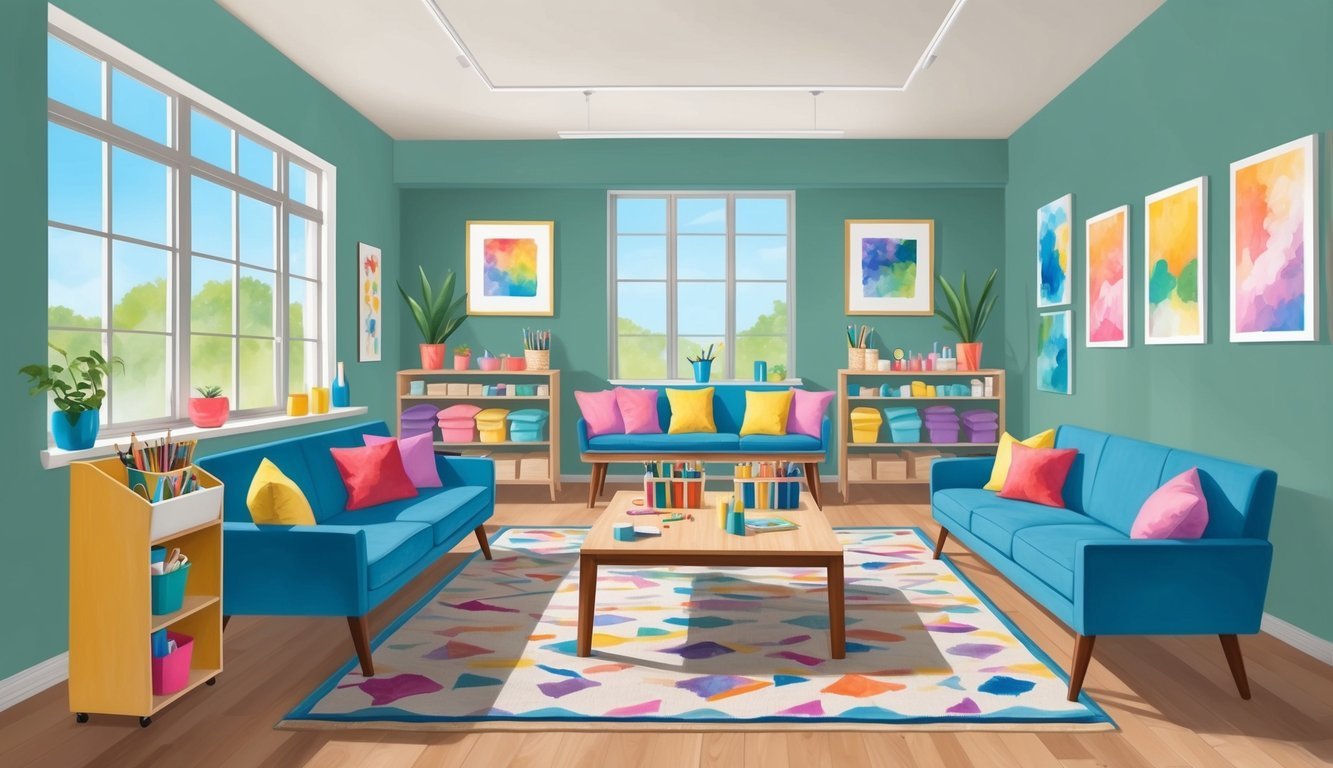“`markdown
Art therapy remains a vibrant and essential field for mental health, and its relevance has recently surged with a spotlight on mental wellness programs nationwide. Events like Mental Health AwarenessWeek in late February 2025 have emphasized the integration of creative arts in therapy and reminded us how crucial art therapy can be in modern mental health care.
From community health programs to organizational psychology initiatives, art therapy is now more in demand than ever.

To work as an art therapist, you need a master’s degree in art therapy. This takes about two years after college.
You’ll learn about art, psychology, and how to help people through art.
After that, you can get certified to show you’re a pro.
1) Pratt Institute Creative Arts Therapy

Want to become an art therapist? Check out Pratt Institute’s Creative Arts Therapy programs.
They offer two amazing options for you to explore.
First up is the Art Therapy and Creativity Development MPS.
This program mixes creative, aesthetic, and psychotherapy theories to give you a well-rounded education.
If you’re into dance, there’s also a Dance/Movement Therapy MS.
Both programs are 60 credits and prepare you to become a psychotherapist using art or dance as your tools.
At Pratt, you’ll learn through hands-on experiences and real clinical training, and recent initiatives like the New York State Council on Arts’ funding for art therapy programs could mean more opportunities for training and placements for Pratt students.
The best part? Pratt’s program is highly rated.
It’s ranked fourth in the country for Master’s in Art Therapy programs.
That means you’re getting top-notch education and skills.
So if you’re passionate about art and helping others, Pratt’s Creative Arts Therapy programs might be just what you’re looking for.
You’ll graduate ready to make a real difference in people’s lives through art.
2) Adler University Art Therapy Program
Hey there! Looking to become an art therapist? Adler University’s got you covered with their awesome Master of Arts in Counseling: Art Therapy program.
It’s a pretty cool deal that lets you become both a counselor and an art therapist.
The recent launch of Adler’s “Art for Healing” initiative in partnership with local communities offers Adler students unique clinical training opportunities, giving them a practical insight into diverse population needs.
You’ll learn how to use creativity to help people feel better mentally and emotionally.
The program focuses on helping folks who don’t always get the support they need in society.
Want to go even further? Adler offers a Ph.D. in Art Therapy too.
It’s online, so you can fit it into your busy life.
One of the neat courses you’ll take is Intermodal Application in Art Therapy.
It teaches you how to mix different art forms in therapy.
Pretty cool, right? Especially with the recent trends toward integrated therapy practices, where combining art forms is proving to be highly effective.
By the time you’re done, you’ll be ready to make a real difference in people’s lives through art.
Plus, you’ll have the skills to work with all sorts of people and help them express themselves creatively.
3) Lesley University’s Expressive Therapies

Looking to blend art and therapy? Lesley University’s got you covered with their cool Expressive Therapies programs.
You can dive into Clinical Mental Health Counseling with an Art Therapy specialization.
This program lets you use art to help others while becoming a licensed counselor.
Want to mix it up? Check out the Expressive Arts Therapy specialization.
You’ll learn to use different art forms in your therapy practice.
For the research-minded, there’s the Expressive Therapies PhD.
You’ll get to study art therapy deeply and maybe even teach it someday.
Not ready for a full degree? No worries! Lesley offers a Graduate Certificate in Expressive Therapies Studies.
It’s perfect for dipping your toes into the field.
And with Lesley’s recent emphasis on mental health wellness programs in schools, this certificate could lead to valuable internships and job placements in educational settings.
At Lesley, you’ll learn from experts who’ve been in the game for years.
Plus, you’ll get hands-on experience to prep you for your future career.
Lesley University’s partnership with Boston Public Schools to embed art therapy sessions in the curriculum has shown the power of early intervention in mental health through art, setting a precedent across MA public schools.
“`

